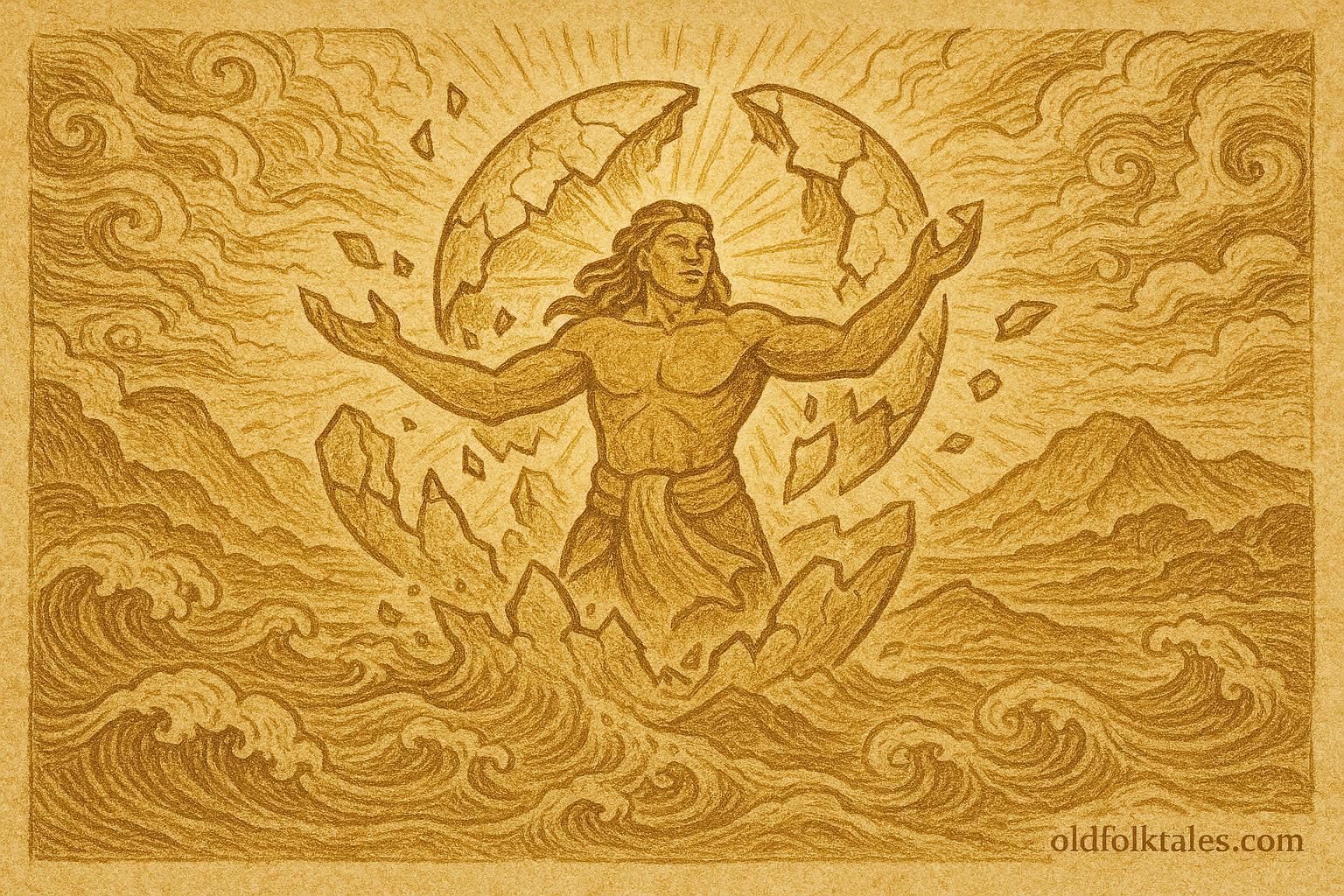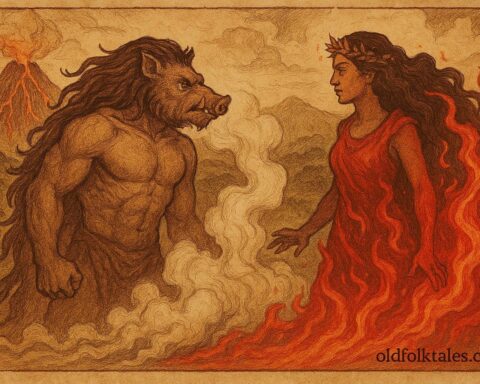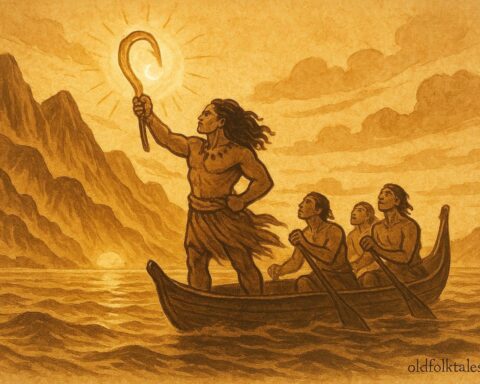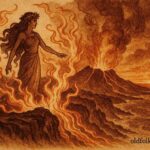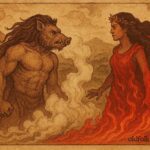Before there was time, before the waves, winds, or stars, there was only Ta‘aroa, the Great Origin, enclosed within his shell, Rumia.
Inside that infinite darkness, he dwelled alone. His shell was vast, smooth, and round, without crack or sound. For endless ages, Ta‘aroa remained in solitude, hearing only the echo of his own thoughts reverberating against the inside of his cosmic prison.
He called out, but there was no answer. No other gods, no light, no motion, only silence. Within that stillness, he dreamed of creation. His spirit pulsed with the longing to bring forth life, to shape the emptiness into something living.
Finally, the day came when his yearning could no longer be contained. With a mighty effort, Ta‘aroa struck the walls of his shell from within. The first sound of the universe was born, a deep rumble that trembled through the void. Again he struck, and cracks appeared. With a third, thunderous blow, the shell shattered, and the Great Creator emerged.
When Ta‘aroa looked around him, there was nothing, only the fragments of his broken home floating in the eternal dark. Yet within those fragments lay the seeds of all things to come. He took the upper part of the shell and raised it high above him, it became the sky. He took the lower half and spread it beneath his feet, it became the earth. The scattered pieces formed the mountains, reefs, and islands. Thus, the heavens and the world were shaped by the breaking of Ta‘aroa’s first dwelling.
But the world was still silent. There were no waves to caress the shores, no breath of wind, no heartbeat of life. So Ta‘aroa began to weave the threads of existence from his own divine essence. From his back, he formed rocks and mountains, firm and eternal. From his chest, he shaped the air and the winds that would carry the scent of the sea. From his blood, he made the waters that filled the oceans, rivers, and clouds. And from his spirit, he brought forth light to pierce the darkness.
As the light spread across the newborn heavens, Ta‘aroa spoke the sacred words of creation, and they became law. His word was the command of the universe, the rhythm by which all life would flow.
Yet even in this new world of sky and sea, Ta‘aroa felt incomplete. The heavens were vast, but he longed for companions, beings to share in the dance of creation. So, from his thoughts and breath, he created the Atua, the gods, who would each govern a part of his world. Some were guardians of the ocean depths; others watched over the winds, the fire, the rain, and the stars. He placed each one in their realm, assigning them power and purpose.
When the Atua had taken their places, Ta‘aroa shaped the first man and woman. From the red clay of the earth and the sacred breath of his spirit, he molded them and gave them life. He set them upon the land and taught them how to live in harmony with the elements, the sea that nourished, the earth that sustained, and the heavens that watched above.
The people bowed before him in reverence, for they knew they were children of the divine shell, kin to the very bones of the world. The mountains were their ancestors, the ocean their cradle, and the sky their protector.
Over time, Ta‘aroa withdrew from the visible world. Having given it order and life, he ascended into the highest of the heavens, where he could watch over his creation in eternal silence. Yet his presence remained in all things, in the beating of the waves, in the whisper of the wind, and in the rhythm of the heart.
Among the Tahitians, it is said that when thunder rolls across the sky, it is the echo of Ta‘aroa striking his shell once more, a reminder of the moment creation began. And when the shells of the sea wash upon the shore, they are tokens of that first sacred vessel, from which all existence was born.
Thus, from solitude came the universe, and from silence came the first song, the heartbeat of Ta‘aroa’s creation that still resounds through the islands of Polynesia.
Moral Lesson
The legend of Ta‘aroa teaches that creation is born from solitude and purpose. Even in stillness, there is the potential for life and transformation. It reminds us that all things, sky, sea, stone, and spirit, are connected and sacred, flowing from a single divine source. To honor creation is to honor the unity of existence itself.
Knowledge Check
- Who is Ta‘aroa in Tahitian mythology?
Ta‘aroa is the supreme creator god who emerged from his shell to form the heavens, earth, and all living things. - What does the shell “Rumia” symbolize in the story?
The shell represents both the womb of creation and the cosmic vessel containing the potential of the universe before its birth. - How did Ta‘aroa create the world?
He broke his shell to form the sky and earth, then shaped the elements and living beings from his own body and spirit. - Why did Ta‘aroa create other gods (Atua)?
He made the Atua to govern the natural forces and maintain harmony in the world he created. - What moral lesson does the legend convey?
The story teaches reverence for creation, the sacred unity of nature, and the divine potential within solitude and creativity. - Where does the story of Ta‘aroa originate?
This creation myth originates from Tahitian oral traditions in Central Polynesia.
Source: Adapted from Ancient Tahiti by Teuira Henry (1928), based on priestly traditions recorded by Orsmond.
Cultural Origin: Tahitian (Central Polynesia)
